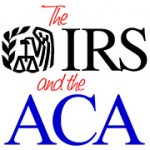It’s Not Too Soon to Tackle the Next ACA Compliance Task

As the IRS puts it, “every person that provides minimum essential coverage to an individual during a calendar year must file an information return and a transmittal.” Health plan providers and self-insured employers are “persons,” in the eyes of the IRS.
The main forms for ACA Compliance require month-by-month information that, among other things, establish whether you indeed are large enough to be subject to the pay-or-play requirements. Recall that even if you have fewer than the minimum number of full-time employees (that is, at least 50 next year), the inclusion of part-timers in the full-time equivalent (FTE) calculation may push you over the top.
Data Requirements for Forms 1095-C and 1094-C
According to the IRS, this is what you’ll need for Form 1095-C:
- Who is a full-time employee for each month,
- Identifying information for employer and employee such as name and address,
- Information about the health coverage offered by month, if any,
- The employee’s share of the monthly premium for lowest-cost self-only minimum value coverage,
- Months the employee was enrolled in your coverage,
- Months the employer met an affordability safe harbor with respect to an employee and whether other relief applies for an employee for a month, and
- If the employer offers a self-insured plan, information about the covered individuals enrolled in the plan, by month.
What you’ll need for Form 1094-C:
- Identifying information for your organization, and
- Information about whether you offered coverage to 70 percent of your full-time employees and their dependents in 2015. (Next year this threshold changes to 95 percent.)
Also, if your organization is part of a group of companies controlled by the same owners, the FTEs of the other companies in the “controlled group” need to be added to the calculation.
Basic Tasks
In a nutshell, as the IRS describes it, completing the forms requires that you:
- determine if your organization is an “applicable large employer,” that is, subject to pay-or-play,
- determine the kind of health insurance coverage you offered to full-time employees and their dependents, if any, and
- identify who your full-time employees are for each month and track health coverage information in 2015.
Earlier this month the IRS issued the final version of these forms and their corresponding instructions. In doing so, it took care of a few loose ends from the originally proposed versions.
Note: Internal Revenue Code sections 6055 and 6066 are the provisions added by the Affordable Care Act that cover reporting requirements.
According to the IRS, most filers will use Forms 1094-B (Transmittal of Health Coverage Information Returns) and 1095-B, also called the Health Coverage return form. Form 1094-B is brief and features basic employer information and states the number of copies of 1095-B that accompany the transmittal.
Who Gets the Forms
A 1095-B is filled out by the health plan and by self-insured employers not subject to the employer responsibility provisions of ACA for each covered employee. A copy of the 1095-B is sent to the IRS and to each employee. The form identifies any employee dependents covered under the plan, in addition to the employee. This document establishes to the IRS that the individual has “minimum essential coverage,” and therefore is not subject to the individual mandate.
Self-insured employers subject to the employer mandate (applicable large employers) need to use 1095-C, the Employer-Provided Health Insurance Offer and Coverage form.
While the forms themselves appear simple, the fine print describing how you determine the data to fill them out may introduce layers of complexity. (See sidebar for an accompanying list of required data elements.)
In the final instructions, the IRS stated that if a full-time employee of a self-insured employer accepts a qualifying offer of coverage and enrolls, you must provide that employee a 1095-C.
Leeway on “Offer”
Also, the final instructions made a change pertaining to plans that exclude spouses who are covered or offered health coverage through their own employers. The final definition of “offer of health coverage” provides some flexibility for interpretation when it comes to offers of coverage to employee spouses. The final rule lets you make the offer subject to certain tests. An example might be a spouse who was not already covered under another plan. You should consult an ERISA attorney before taking advantage of this provision.
In yet another nuanced change regarding your offer of coverage, the final instructions specify that you can use the first day of the first payroll period of each month, or the last day of the first payroll period of each month, if the last day is in the same month as when the payroll period starts. In addition, you can only report offering coverage during an unspecified period within a given month if the offer is made every day of that month.




